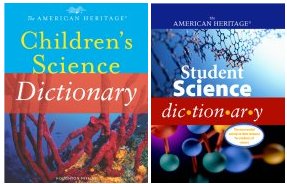Eyes on the depths Additional Information
To learn about Edith Widder and her work, including previous Deep Scope expeditions, visit www.oceanrecon.org. The site also contains information about two related children’s books: a picture book about a mermaid’s deep-sea adventures, and a bioluminescence-themed coloring book. (Ocean Research and Conservation Association).
In Sönke Johnsen’s lab at Duke University in Durham, N.C., scientists study visual ecology and underwater bioluminescence. To learn more about their research, go to www.biology.duke.edu/johnsenlab(Duke University).
For an introduction to bioluminescence in the ocean, see www.biolum.org/ (Harbor Branch Oceanographic Institution).
You can find more details about the Eye-in-the-Sea (EITS) camera system at www.mbari.org/mars/general/eits.html (Monterey Bay Aquarium Research Institute).
For more information about the Harbor Branch Oceanographic Institution and its research projects, visit www.hboi.edu/index_06.html (Harbor Branch Oceanographic
Institution).
The Monterey Bay Aquarium Research Institute is a major center of ocean science and technology. Learn more about the organization, its research, and its educational programs at www.mbari.org (Monterey Bay Aquarium Research Institute).
Ramsayer, Kate. 2004. Deep drilling at sea. Science News for Kids (Sept. 8). Available at http://www.sciencenewsforkids.org/articles/20040908/Feature1.asp.
Sohn, Emily. 2006. Sea giants and island pygmies. Science News for Kids (Sept. 20).
Available at http://www.sciencenewsforkids.org/articles/20060920/Feature1.asp.
______. 2006. Firefly delight. Science News for Kids (June 14). Available at http://www.sciencenewsforkids.org/articles/20060614/Feature1.asp.
______. 2006. Coral gardens. Science News for Kids (March 1). Available at http://www.sciencenewsforkids.org/articles/20060301/Feature1.asp.
______. 2005. Detecting an eerie sea glow. Science News for Kids (Oct. 5). Available at http://www.sciencenewsforkids.org/articles/20051005/Note2.asp.
______. 2004. Explorer of the extreme deep. Science News for Kids (Nov. 10). Available at http://www.sciencenewsforkids.org/articles/20041110/Feature1.asp.
______. 2004. The pressure of scuba diving. Science News for Kids (June 23).
Available at http://www.sciencenewsforkids.org/articles/20040623/Feature1.asp.
Books recommended by SearchIt!Science:
![[book]](https://www.sciencenewsforstudents.org/wp-content/uploads/2019/11/a1623_b1346.jpg) |
Animals That Glow— Judith Janda Presnall
Published by Franklin Watts/Scholastic, 1993.
Imagine a worm that lights up like a tiny toy train. There’s a bright red light on the worm’s head! Beetles blink codes to each other using lanterns in their tails. And some kinds of fish have built-in headlights to help them make their way through the murky ocean. All these light-producing creatures are using bioluminescence. With color photographs and diagrams, this book shows how fish, glowworms, fireflies, and other insects and marine creatures use this light. Some creatures light up to communicate, while others do it to camouflage themselves, lure prey, or frighten enemies. The book features an explanation of what causes bioluminescence. |
![[book]](https://www.sciencenewsforstudents.org/wp-content/uploads/2019/11/a1623_b2972.jpg) |
DK Guide to the Oceans— Frances Dipper
Published by DK Publishing, 2002.
Mudskippers can walk on land and even climb trees. When they’re on land, they keep their gills full of a mixture of water and air so that they can still breathe. You’ll find thousands of facts such as this one, as well as full-color photographs, diagrams, and maps, in this book. Learn about coral reefs, underwater volcanoes, beaches, frozen seas, and many other watery environments. Discover the assortment of animals and plants that call the ocean home. Find out how people have both harmed the environment and protected it. Learn how you can help keep the oceans safe for all creatures. Complete with additional sections on ocean mythology, records, and Web sites, this book provides an introduction to the mysterious world underwater. |
![[book]](https://www.sciencenewsforstudents.org/wp-content/uploads/2019/11/a1623_b3654.jpg) |
Discovering Underwater Secrets with a Nature Photographer— Patricia J. Murphy
Published by Enslow Publishers, 2008.
Patricia Murphy introduces young readers to nature photographer Norbert Wu. Take a breath-taking look at his underwater world, from the blue waters of the Bahamas to Australia’s Great Barrier Reef. How does he take photos under water? How can he swim under the ice in Antarctica? Readers will learn about Wu’s fascinating career and understand how his images help show how the oceans need better care. |
Power Words
bioluminescence Emission of light by living organisms, such as fireflies, glowworms, and certain fish, jellyfish, plankton, fungi, and bacteria. It occurs when chemical compounds react and give off light.
camouflage Protective coloring or other appearance that conceals an animal and enables it to blend into its surroundings.
ecosystem An ecological community made up of plants, animals, and microorganisms together with their environment. A pond or a rain forest are each examples of complex ecosystems.
Copyright © 2002, 2003 Houghton-Mifflin Company. All rights reserved. Used with permission.
